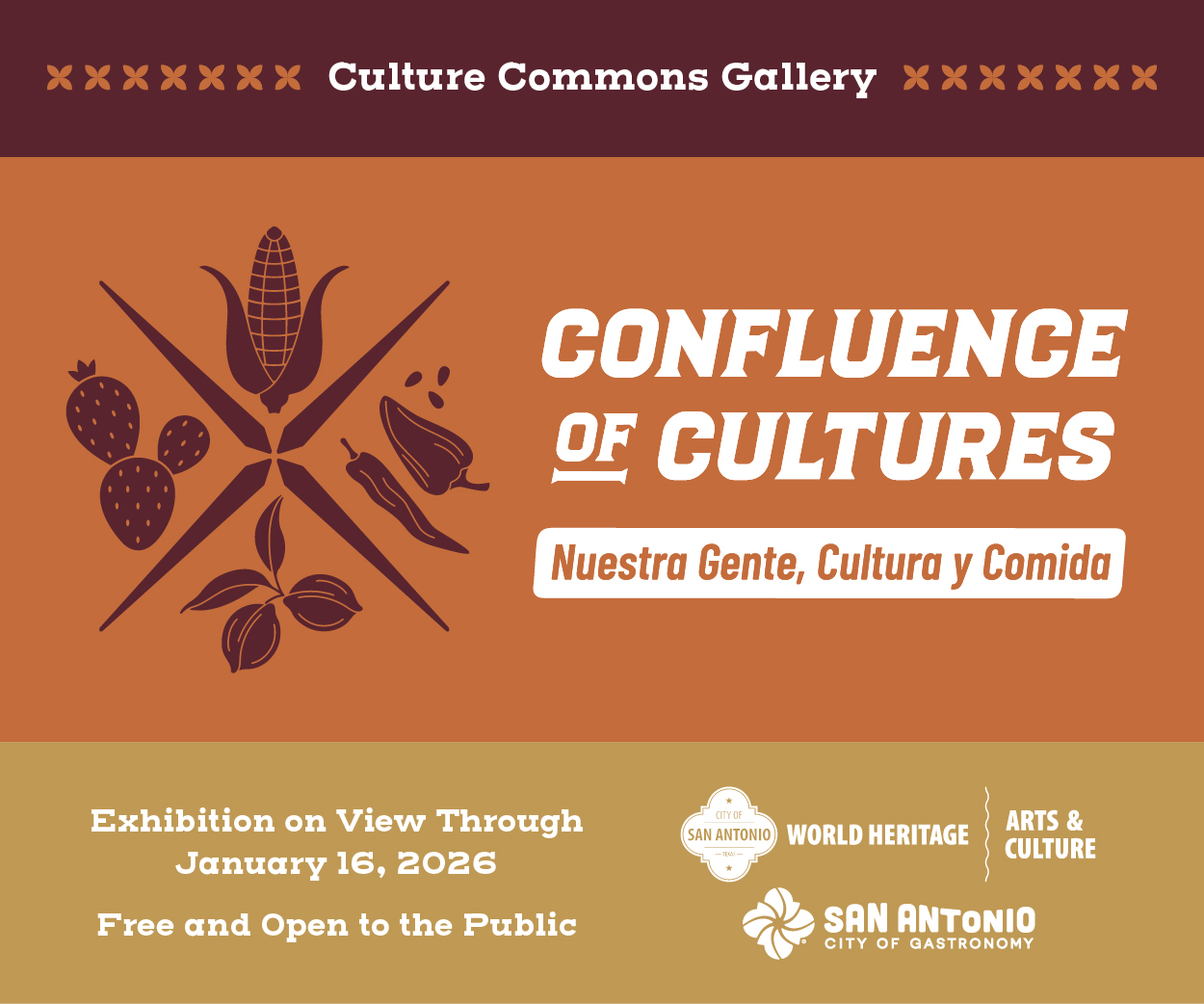A magnificent fresco by New Mexican Maestro Frederico Vigil is near completion on a stairwell of the Convention Center in Albuquerque, New Mexico. The 2,500-square-foot fresco tells the history of viticulture [the cultivation of grapevines] worldwide with ample space devoted to New Mexican winemaking. The art of harvesting grapes and winemaking came to New Mexico with the mestizo colonists from New Spain’s Northern provinces in 1598.
Vigil, a veteran of more than a dozen frescos in New Mexico, began the history of wine murals in 2018. Harriett and I visited him on October 13th of this year. It was Indigenous Day and he had taken the morning off from this laborious undertaking to discuss his project. Off to the side of the fresco, the Convention Center has allocated spacious underground quarters for Vigil’s studio and art laboratory. There he experiments with color pigments, and he and his art interns complete paper drafts or cartoons of each image to be incorporated into the fresco.
The Romans perfected the art of fresco construction, and a few examples of beautiful Roman walls were miraculously preserved in Pompei after a volcano destroyed the city’s structures in 79 CE. The great sculptor, artist, and architect Michelangelo is credited with giving the art world its most stunning examples of fresco paintings in the Vatican’s Sistine Chapel in Rome, Italy. In the 20th century, the great Mexican muralist Diego Rivera learned fresco painting in Italy and later completed major frescoes in Mexico and the United States.
Vigil is beginning his 40th year as a fresco muralist. A native of Santa Fe and a self-trained artist, Vigil began his career painting religious retablos on wooden panels. In 1984, he won a fellowship from the Sana Fe Arts Commission to pursue a formal apprenticeship in fresco painting. He studied with California artists Lucienne Bloch and Stephen Pope Dimitroff, former assistants to Diego Rivera. Unlike most Mexican fresco painters, Vigil uses natural colors extracted from crushed New Mexico-colored rocks for his pigments. His studio is filled with charts of nature’s best hues and tints.
Fresco muralism is a complex process requiring knowledge of design, color hues, drawing, applying plaster, and painting on moisture-laden plaster. The wall preparation begins with applying five layers of plaster made from a mixture of slaked lime and sand. The first three layers can take 10 days to dry. The last two layers are the most important. Vigil explained the delicate process of applying the fifth, final layer, known as intonaco, to Matthew Jaffe of Sunset Magazine. On the fifth layer, Vigil paints the plaster while it is still wet. Jaffe notes that Vigil “grinds pigments to a fine powder, then brushes them onto wet plaster, following the outline of his sketches transferred earlier.”
Fresco painters often work under stressful conditions because they must plaster and paint while on scaffolding two or three stories high. The Convention Center mural surrounds a spiral staircase and is two stories high. Working on the stairwell requires faith in structural technology, balance, and persistence. Vigil spends full days on the scaffolds and on some occasions stands on his tiptoes to reach high ceiling panels.
Vigil’s Convention Center fresco depicts early wine vessels from Egyptians, Romans, and Greeks. He illustrates winemaking’s global history. Below the landing between the first and second floors, Vigil traces the grape’s development from blossom to fruit. New Mexico Magazine writer Ashley M. Biggers notes, “Since it’s painted in a stairwell, every step allows a different perspective, and new portions emerge from one landing to the next.” Vigil explained that he portrays the Spanish influence on the west side of the fresco while reserving the east side for Native American agricultural practices such as waffle gardens and diversion dams.
After viewing the Convention Center fresco project in downtown Albuquerque, we visited the National Hispanic Cultural Center near the South Valley of Albuquerque where Vigil completed the Torreon fresco “Mundos de Mestizaje.” At the Hispanic Center, we met with Zach Quintero, in his second year as CEO of the prestigious center, and toured the Center’s art museum that featured a new exhibit curated by Vicente Telles, an Albuquerque artist recently named a finalist for American Portraiture Today [Outwin 2025] sponsored by the Smithsonian’s National Portrait Gallery.
Next, we followed Quintero to the Torreon building that houses Vigil’s famed fresco “Mundos de Mestizaje.”
In this mural, Vigil vividly illustrates the complexities and diversity of the Hispanic experience in New Mexico. The fresco’s 4,000 square feet of paintings depict more than thirty centuries of Hispanic history from Europe to Mesoamerica and into the American Southwest.
The monumental Torreon fresco, located in a 45-foot tower on the National Hispanic Cultural Center grounds, is the largest fresco concave in North America. Begun in 2002, the Torreon fresco consumed Vigil’s creativity and labor until 2009. A serious student of Hispanic, European, and Indigenous cultures, Vigil embedded the fresco with images of Mesoamerican Olmecs, North America’s America’s oldest culture; Pueblo Indians; Hispanics; and Euro-Americans. The Pueblo Indians are notable for having resided in Northern New Mexico for 1200 years and having contributed to the earliest rock paintings on the North American continent.
The Torreon fresco panel sections reveal Vigil’s deep understanding of historical connections among the arts, sciences, and language. For instance, in a mural panel
dedicated to the Treaty of Guadalupe Hidalgo of 1848, Vigil acknowledged the United States’ promise to New Mexicans of the rights to property, language, and culture. Vigil completed the Torreon fresco as Albuquerque celebrated the city’s 300th anniversary.
Maestro Frederico Vigil is one of the most accomplished fresco painters in America. Before Vigil turned his prodigious talents to fresco painting, art historians worried that the ancient process was on the verge of dying out in the Southwest. Vigil’s New Mexico frescos demonstrate remarkable artistic talent and a superior understanding of natural color pigments in addition to complex mural design and technical aspects of the application of paint and plaster to spacious walls. Equally important is his dedication to training a cohort of talented young artists in the tradition of fresco art.






